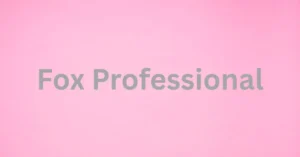Eyeglasses made specifically for those with Attention Deficit Hyperactivity Disorder (ADHD) help them concentrate by blocking out distracting visuals. In order to aid the wearer in maintaining focus, these spectacles frequently have coloured lenses, technology that filters out light, or improvements to visual clarity. They won’t magically fix attention deficit hyperactivity disorder (ADHD), but they can help some individuals cope with symptoms including light sensitivity, sensory overload, and difficulty with tasks that need them to be in front of a screen.
How Do ADHD Glasses Work?
ADHD glasses typically work by modifying the way light enters the eye and is processed by the brain. This adjustment aims to:
- Minimize overstimulation caused by certain light frequencies.
- Improve visual clarity and reduce screen glare.
- Create a calming effect through color tinting (e.g., blue or green lenses).
- Promote better attention by stabilizing visual input.
Mechanisms in Detail
- Tinted Lenses: Certain colors (like blue or gray) may reduce hyperactivity and calm the mind.
- Light Filtering: Blocks harsh artificial light and glare from screens.
- Contrast Enhancement: Increases text clarity for reading and learning tasks.
The Science Behind ADHD Glasses
While research is still emerging, several studies support the potential benefits of filtered lenses in improving concentration for people with ADHD.
- A 2017 study published in Neuropsychological Trends showed that blue-tinted lenses helped children with ADHD improve reading comprehension and reduce hyperactivity.
- Visual stress, often reported by individuals with ADHD, can be alleviated using color overlays or tints, according to the American Optometric Association.
Brain and Visual Processing
People with ADHD may have differences in how their brain processes visual information. ADHD glasses aim to modulate that experience to prevent cognitive overload.
Types of ADHD Glasses Available
| Type | Description | Best For |
| Blue Light Blocking Glasses | Reduce eye strain from digital screens | Students, office workers |
| Color-Tinted Glasses | Use calming tints (e.g., blue, green) to stabilize mood and focus | Children and teens with visual sensitivity |
| Prism Glasses | Correct visual alignment issues | ADHD coexisting with visual processing disorders |
| Therapeutic Lenses | Custom lenses prescribed by neuro-optometrists | Severe ADHD or learning disabilities |
Benefits of ADHD Glasses
- Improved Focus: By reducing visual noise, users often report better task concentration.
- Reduced Screen Fatigue: Especially for people spending long hours on digital devices.
- Enhanced Reading Ability: Helps reduce skipping lines or words.
- Calmer Mood: Light filtering may contribute to a more regulated emotional state.
- Better Sleep: Less blue light can help with melatonin production and sleep regulation.
Additional Perks
- Portable and non-invasive.
- No prescription needed for many models.
- Can complement existing ADHD treatment (e.g., therapy, medication).
Limitations and Considerations
While promising, ADHD glasses are not a one-size-fits-all solution.
Potential Drawbacks:
- Placebo Effect: Some studies suggest benefits may be psychological rather than physiological.
- Cost: Higher-end models can be expensive.
- Not a Replacement: Glasses don’t treat core ADHD symptoms on their own.
- Adjustment Period: Some users may need time to get used to lens tinting or visual shifts.
Real-World Case Studies
Case 1: Emma, Age 9
Emma struggled with reading and focus in her classroom. After trying blue-tinted ADHD glasses, her teacher noticed fewer off-task behaviors, and Emma reported that words on the page “stopped moving.”
Case 2: David, Age 27
David works in IT and experienced daily headaches from screen exposure. Blue-light filtering glasses reduced his migraines and improved his ability to concentrate during coding tasks.
Case 3: Sarah, Age 34
Diagnosed with adult ADHD, Sarah tried therapeutic lenses prescribed by her behavioral optometrist. The combination of medication and glasses gave her the clarity to manage work deadlines more effectively.
Who Should Try ADHD Glasses?
ADHD glasses may be helpful for:
- Children with visual overstimulation issues.
- Adults who work in screen-heavy environments.
- Students with reading difficulties or light sensitivity.
- Individuals seeking non-medication support options.
Pro Tip: Always consult a vision specialist or behavioral optometrist before choosing therapeutic lenses.
How to Choose the Right Pair
When selecting ADHD glasses, consider the following:
Key Factors
- Purpose: For reading, screen use, or emotional regulation?
- Lens Type: Tinted, blue-light blocking, or prism?
- Frame Comfort: Lightweight, adjustable, and durable.
- Budget: Range from $20 to $400 depending on customization.
- Professional Input: Especially for therapeutic or prism lenses.
Trusted Brands to Explore
- Axon Optics
- Gunnar
- TheraSpecs
- Irlen Glasses
Cost and Where to Buy
Prices vary significantly:
| Type | Estimated Price Range | Where to Buy |
| Over-the-Counter Glasses | $20 – $60 | Amazon, Walmart, CVS |
| Prescription ADHD Glasses | $100 – $400+ | Optometrists, Specialty Clinics |
| Blue Light Glasses | $25 – $80 | Online Retailers, Eyewear Stores |
Always read reviews and check for return policies before purchasing.
Conclusion
While ADHD glasses won’t magically solve all of your problems, they can help a lot of people with visual processing and attention issues. These spectacles might be a non-pharmaceutical option for parents seeking assistance for their children who are having trouble reading, adults suffering from screen fatigue, or students having trouble with reading.
FAQs
1. Do ADHD glasses really work?
They can for some individuals—especially those sensitive to light or prone to visual stress. Results vary.
2. Are ADHD glasses suitable for children?
Yes, especially those with reading difficulties or sensitivity to light. Always consult an eye specialist first.
3. Can I use ADHD glasses with my prescription lenses?
Many ADHD glasses can be made to include your prescription or worn over contact lenses.
4. Are these glasses covered by insurance?
Some therapeutic glasses may be covered under vision or health plans. Check with your provider.
5. What’s the difference between blue light glasses and ADHD glasses?
Blue light glasses mainly reduce digital eye strain. ADHD glasses may include blue light filtering plus additional tinting or therapeutic adjustments.
For more information, click here.









